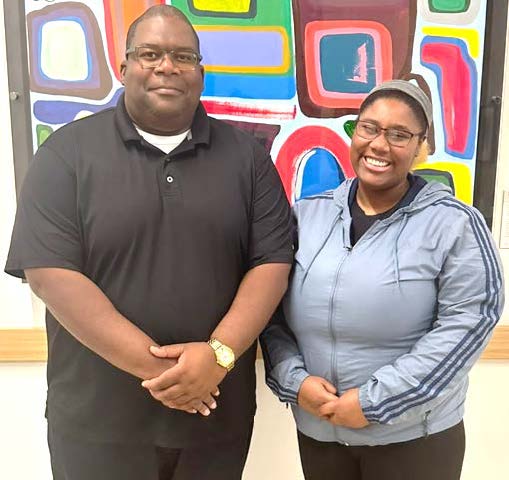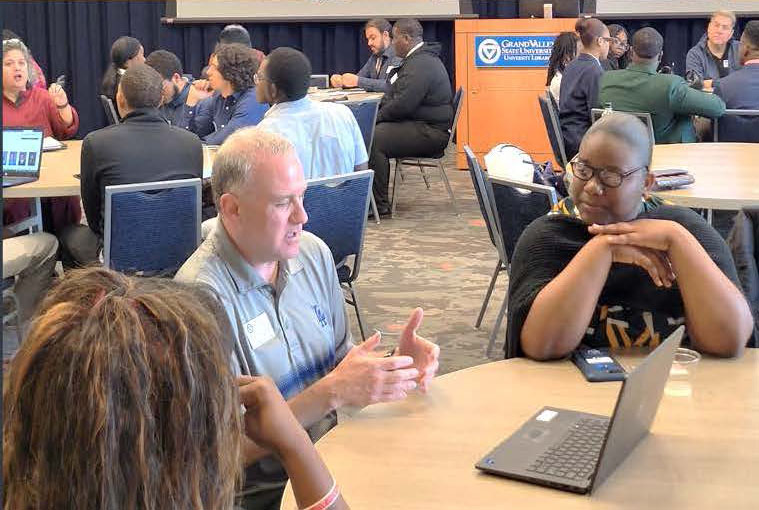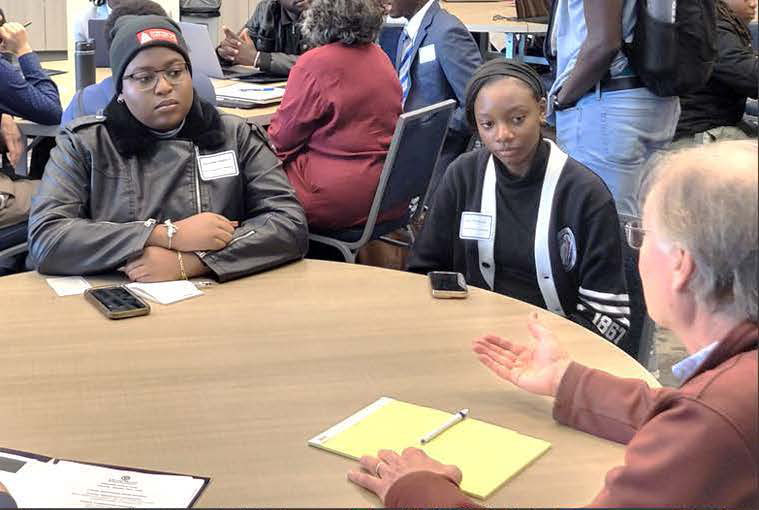Five St. Augustine University (SAU) students traveled to Grand Valley State University (GVSU) recently to learn and network as part of a partnership SAU has with the institution, located in Grand Rapids, Michigan. .
Held Oct. 28-30, the event was part of a GVSU initiative known as the Historically Black College-University (HBCU) / Hispanic Service Institution (HSI) Consortium. SAU is one of the 10 institutions that are part of the consortium.
The consortium’s goal is to collaborate, not compete, with HBCUs and HSIs to increase opportunities for students from minority populations to find real, meaningful positions while simultaneously expanding talent pipelines in Michigan- in the West through postgraduate studies.
SAU students attending the event were Gabrielle Hepburn, a senior chemistry major; Raven McIntosh, a senior majoring in biology; Tyler Miller and Karly Gerome, both engineering mathematics sophomores; and Israel Pennerman, a public health junior. They had the opportunity to learn about opportunities at Grand Valley State University and connect with students from other HBCU / HSI consortium institutions participating in the event: Albany State University, Fort Valley State University, Houston Christian University, Johnson C. Smith University , Savannah State University, Talladega College, Wilberforce University and Voorhees University.
Saint Augustine’s has partnered with Grand Valley State since 2021. To date, two SAU students have earned master’s degrees from Grand Valley – Indie Sobiech (Biomedical Science) and Shaquelle Bain (Public Health). Four students are currently enrolled in Biomedical Sciences – Richara Bain, Janina Mayers, Kadain Roper and Darriel Wright. And one student is enrolled in Engineering – Joyce Jepleting. All students are recipients of scholarships or assistantships.
Dr. Tyrell Carr, associate dean of the School of Sciences, Mathematics and Allied Health, is the Consortium Lead for SAU. The program allows students to earn degrees faster, he explained.
“Our students can access a wider selection of graduate academic degrees at GVSU in the fields of science, technology, engineering, mathematics and medicine,” explained Dr. Carr. “The program is open to 3+2 pathways in which our students earn their undergraduate degree from SAU by taking courses at SAU in years 1 through 3 and GVSU in year 4 and then reverse transferring GVSU courses back to SAU for graduation purposes, while completing Master’s degree requirements in year 5 at GVSU. Currently, our students complete all undergraduate courses at SAU and then graduate from SAU before enrolling at GVSU for master’s studies, which all together is typically a six-year experience compared to a five-year, 3+2 pathway.
The program has benefited students like Indie Sobiech, who earned a BS in biology from SAU in 2022 and a Master of Health Sciences in Biomedical Sciences from GVSU in 2024.
“My experience at Grand Valley has been nothing but amazing,” said Sobiech. “The highlight of my experience has to be the faculty of the Biomedical Sciences program. They pushed me to be the best from the first day of class. Even on days when I felt lost or discouraged, they showed me different ways to succeed. Another highlight is my group in the program. We stand together and make sure everyone can be successful in every classroom.”
She plans to earn her Ph.D. in pharmacology and become a pharmacologist.
About St. Augustine University
Founded in 1867 by the Episcopal Diocese of North Carolina, the mission of St. Augustine University is to foster a learning community in which students can be prepared academically, socially, and spiritually for leadership in a complex, diverse, and changing world. it changes rapidly.
About Grand Valley State University
Grand Valley State University was established by the Michigan legislature in 1960 in response to the need for a public four-year college in the state’s second metropolitan region. Its mission is to educate students to shape their lives, their professions and their societies. The University contributes to the enrichment of society through excellent teaching, active scholarship and public service.

Dr. Carr with Indie Sobiech

Israel Pennerman engaged in Conversation with Director of the Biomedical Sciences Graduate Program, Dr. Christopher Pearl

Gabrielle Hepburn and Raven McIntosh talk with the Director of the Graduate Program in Cellular and Molecular Biology, Dr. Mark Staves
